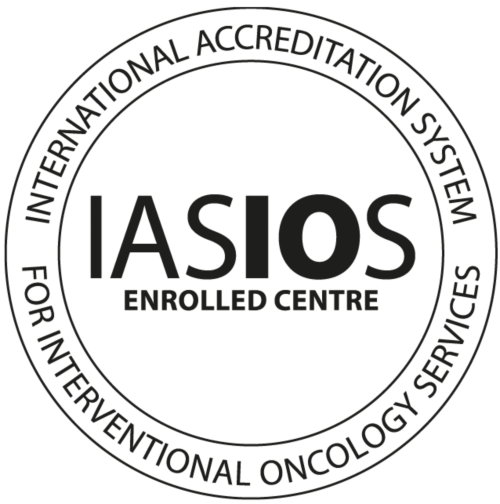St. Jude Family of Websites
Explore our cutting edge research, world-class patient care, career opportunities and more.
St. Jude Children's Research Hospital Home

- Fundraising
St. Jude Family of Websites
Explore our cutting edge research, world-class patient care, career opportunities and more.
St. Jude Children's Research Hospital Home

- Fundraising
About the department
The Department of Radiology, a recipient of the Quantitative Imaging Excellence (CQIE) designation, is the only broad-based pediatric radiology program committed largely to childhood cancer. Radiology has a fundamental role in improving the quality of patient care and outcomes for children with catastrophic diseases. We function in four sections: Body Imaging, Neuro Imaging, Interventional Radiology, and Nuclear Medicine. Our focus on exceptional and specialized imaging via multiple modalities to guide diagnosis and therapy monitoring is balanced with a drive to explore research technologies that enhance diagnostic accuracy. Our research endeavors span multiple facets of imaging: functional MRI (fMRI), spectroscopy, metabolic imaging, a growing Interventional Radiology section, as well as preclinical development of new imaging techniques. The department also offers a variety of education opportunities to support both new and experienced physicians.
Clinical operations: St. Jude Children’s Research Hospital provides clinical diagnostics in multiple imaging modalities including MRI, Nuclear Medicine, Ultrasound, CT, X-Ray, and Interventional Radiology. Our investments in advanced imaging technologies support new diagnostic procedures and low-dose radiation solutions. We are committed to reducing patient radiation exposure through routine evaluation of imaging protocols and dose. The Department of Radiology’s equipment and software are customized to support treatment protocols St. Jude’s patient population.
Technologies
- X-ray (XR): Philips Digital and Fluoro, Panorex
- Ultrasound (US): GE Logiq E9 and GE Logiq E10
- Computed Tomography (CT): GE Revolution Dual Energy CT, Hologic DXA Unit
- Magnetic Resonance Imaging (MRI): Siemens 1.5 T Avanto Fit operating E11E software, Siemens 3T Prisma operating XA30 software. Additional software functionality includes elastography, multinuclear spectroscopy, and real-time functional
- Interventional Radiology (IR): Siemens Artis Q integrated with Siemens Somatom Confidence 20 slice CT, Siemens Cios Spin C-arm, Siemens Freestyle Ultrasound, Sony Nucleus video and imaging integration system
- Nuclear Medicine (NM): United uMI Panorama GS PET/CT, Siemens SPECT/CT
In the news
-
Uncovering the source of a “silent” syndrome
Discover the neuronal interactions at the center of posterior fossa syndrome
-
Seeing is believing: Bringing virtual reality into the clinic
See how St. Jude investigators are using virtual reality in their work.
-
Radiology AI Podcasts: Standardizing LLM Research in Radiology
Dr. Ali Tejani and Dr. Paul Yi discuss the current state of large language model (LLM) research and its applications in radiology.
-
The Uromigos podcast: Radiomics in RCC
Dr. Andrew Smith discusses the emerging field of radiomics and shares his hopes and skepticism
International Accreditation System for Interventional Oncology Services
The Department of Radiology is pleased to announce that we are now part of the Interventional Accreditation System for Interventional Oncology Services (IASIOS), the only program in the world that is exclusively certifying interventional oncology. By participating in the IASIOS Accreditation program, we are joining a global community of centers dedicated to the highest quality standards in IO.
We are proud to be leaders in this field, demonstrating a commitment to patient safety and providing high-quality cancer care.
Information about IASIOS accreditation can be found at www.iasios.org

Radiology research labs
The Department of Radiology has created focused labs in the areas of metabolic, functional, and structural imaging research. Each of these labs is actively pursuing cutting edge research for different aspects of childhood cancer including, but not limited to, observing metabolic changes that precede morphological changes as an early readout for treatment efficacy, strengthen the Cancer Center’s neuroscience initiatives with epidemiology, Psychology, and Radiation Oncology, and perform quantitative structural analyses of the CNS to guide interventions and assess response to cancer treatment to minimize impact on the developing brain. The department is currently recruiting faculty to lead two additional labs focused on molecular imaging and body imaging respectively.
Cores and services
Clinical
Related resources
Join the Radiology team
Leadership
-
View Details
Andrew Smith, MD, PhD
Member, St. Jude Faculty
Chair, Department of Radiology
Affiliations
Research Interests
- Clinical applications of Artificial Intelligence (AI) in Radiology
- AI in tumor response evaluation and detection of cancer
- AI for opportunistic screening of diseases
- Use of large language models in radiology reporting
Contact Information
Andrew Smith, MD, PhD
Department of Radiology
MS 220
St. Jude Children's Research Hospital
262 Danny Thomas Place
Memphis, TN 38105-3678
Staff

- Hartwell Strain
- Administrative Director

- Nancy Foster
- Director, Imaging Informatics and Information Services

- Kendri Herring
- Manager, Diagnostic Imaging Operations

- Cindy Hooper
- Program Manager, Quality Patient Safety and Risk Management

- Leslie Jones
- Manager, DI Academic and Research Operations

- Amanda Meek
- Administrative Manager

- Erin Starnes
- Sr. Program Manager

- Amy Vavere, PhD
- Director, Molecular Imaging Core
Radiology Faculty
-
View Details
Zachary R. Abramson, DMD, MD
Assistant Member, St. Jude Faculty
Section Chief, Body Radiology
Zachary R. Abramson, DMD, MD
Assistant Member, St. Jude Faculty
Section Chief, Body Radiology
Affiliations
Research Interests
- Quantitative Imaging
- Computer-aided 3D Modeling for Diagnosis and Treatment Planning
- Radiological Multimedia Online Education
Contact Information
Zachary R. Abramson, DMD, MD
Radiology
MS 220, Room I3118
St. Jude Children's Research Hospital
262 Danny Thomas Place
Memphis, TN 38105-3678
-
View Details
Allison Aguado, MD
Associate Member, St. Jude Faculty
Affiliations
Research Interests
- Evaluating the safety and effectiveness of interventional radiology therapies for children with cancer
Contact Information
Allison Aguado, MD
Department of Radiology
MS 220
St. Jude Children's Research Hospital
262 Danny Thomas Place
Memphis, TN 38105-3678
-
View Details
Asim K. Bag, MBBS, MD, EDiNR
Associate Member, St. Jude Faculty
Director, Neuroimaging Section
Director, Pediatric Oncologic Imaging Education
Co-chair, Pediatric Biomedical Imaging Initiative
Asim K. Bag, MBBS, MD, EDiNR
Associate Member, St. Jude Faculty
Director, Neuroimaging Section
Director, Pediatric Oncologic Imaging Education
Co-chair, Pediatric Biomedical Imaging Initiative
Affiliations
Research Interests
- Response assessment of immunotherapy and radiation therapy
- MR sequence optimization
- Imaging of hippocampus mediated memory function
Contact Information
Asim K. Bag, MBBS, MD, EDiNR
Department of Radiology
MS 220, Room I3104
St. Jude Children's Research Hospital
262 Danny Thomas Place
Memphis, TN 38105-3678
- Response assessment of immunotherapy and radiation therapy
-
View Details
Puneet Bagga, PhD
Assistant Member, St. Jude Faculty
Director, Metabolic Imaging Research Hub
Puneet Bagga, PhD
Assistant Member, St. Jude Faculty
Director, Metabolic Imaging Research Hub
Affiliations
Research Interests
- Developing non-invasive techniques to image cellular metabolic pathways in cancer using magnetic resonance spectroscopy
- Combining proton magnetic resonance spectroscopy with deuterium/carbon-13 labeled substrates to evaluate cellular metabolism in preclinical models and design clinically translatable methods
- Advancing molecular magnetic resonance imaging (MRI) techniques, including chemical exchange saturation transfer and positron emission tomography, to image neurotransmitters, oxidative phosphorylation, and cancer metabolism
- Creating imaging tools to assist oncologists and neurologists in therapy decision-making and treatment progress evaluation
Contact Information
Puneet Bagga, PhD
Department of Radiology
MS 220, Room I3104
St. Jude Children's Research Hospital
262 Danny Thomas Place
Memphis, TN 38105-3678
-
View Details
Sue C. Kaste, DO
Emeritus, St. Jude Faculty
Research Interests
- Pediatric oncologic imaging (orthopedic, dental, orbital)
- Diagnostic imaging of late effects of oncotherapy
- Skeletal sequelae in childhood cancer survivors (bone mineral density; osteonecrosis)
- Control of radiation exposure in pediatric medical imaging
Contact Information
Sue C. Kaste, DO
Department of Radiology
MS 220, Room I3112
St. Jude Children's Research Hospital
262 Danny Thomas Place
Memphis, TN 38105-3678
-
View Details
Robert A. Kaufman, MD, FACR
Emeritus, St. Jude Faculty
Affiliations
Research Interests
- The etiology of pneumonia in immunocompromised and immunocompetent children
- Radiation dose reduction in cancer imaging
- Quality and safety in pediatric imaging
- Administrative medicine
Contact Information
Robert A. Kaufman, MD, FACR
Department of Radiology
MS 220, Room I3209
St. Jude Children's Research Hospital
262 Danny Thomas Place
Memphis, TN 38105-3678
-
View Details
Stuart McAfee, PhD
Instructor, St. Jude Faculty
Affiliations
Research Interests
- Network interactions between cerebellum, brainstem and cerebral cortex in normal development and disease
- Etiology of mutism and related symptoms in posterior fossa syndrome
Contact Information
Stuart McAfee, PhD
Department of Radiology
MS 220
St. Jude Children's Research Hospital
262 Danny Thomas Place
Memphis, TN 38105-3678
-
View Details
Mary E. (Beth) McCarville, MD
Emeritus, St. Jude Faculty
Affiliations
Research Interests
- Ultrasound
- Contrast Enhanced Ultrasound
- Solid tumor imaging
Contact Information
Mary E. (Beth) McCarville, MD
Department of Radiology
MS 220, Room I3117
St. Jude Children's Research Hospital
262 Danny Thomas Place
Memphis, TN 38105-3678
-
View Details
Pritam Mukherjee, PhD
Assistant Member, St. Jude Faculty
Co-Director, Image Quantification and Artificial Intelligence Laboratory (IQAI)
Pritam Mukherjee, PhD
Assistant Member, St. Jude Faculty
Co-Director, Image Quantification and Artificial Intelligence Laboratory (IQAI)
Affiliations
Research Interests
- Development and application of artificial intelligence (AI) in radiology
- Analysis of longitudinal imaging and other multi-modal data
- Multi-modal data integration for decision making
Contact Information
Pritam Mukherjee, PhD
St. Jude Childen's Research Hospital
262 Danny Thomas Place
Memphis, TN 38105-3678
-
View Details
Kiel D. Neumann, PhD
Associate Member, St. Jude Faculty
Director, Molecular Imaging Research Lab
Kiel D. Neumann, PhD
Associate Member, St. Jude Faculty
Director, Molecular Imaging Research Lab
Affiliations
Research Interests
- Translational imaging and radiopharmaceutical development
Contact Information
Kiel D. Neumann, PhD
Department of Radiology
MS 220, Room I3120A
St. Jude Children's Research Hospital
262 Danny Thomas Place
Memphis, TN 38105-3678
-
View Details
Soniya N. Pinto, MBBS
Assistant Member, St. Jude Faculty
Soniya N. Pinto, MBBS
Assistant Member, St. Jude Faculty
Research Interests
- Imaging of neurologic complications of CAR T cells
- Investigating the use of Apparent Diffusion Coefficient as a predictive marker for neurotoxicity in CAR T-cell patients
- Applications of proton MR spectroscopy in non-oncologic central nervous system diseases
Contact Information
Soniya N. Pinto, MBBS
Department of Radiology
MS 220, Room I3114
St. Jude Children's Research Hospital
262 Danny Thomas Place
Memphis, TN 38105-3678
-
View Details
Wilburn E. Reddick, PhD
Member, St. Jude Faculty
Interim Chief, Diagnostic Imaging Research Division
Director, Structural and Connectivity Imaging Research (SCIR) Hub
Wilburn E. Reddick, PhD
Member, St. Jude Faculty
Interim Chief, Diagnostic Imaging Research Division
Director, Structural and Connectivity Imaging Research (SCIR) Hub
Affiliations
Research Interests
- Developing and validating quantitative methods used to assess structural brain injury
- Structure-function relationship of white matter injury as a result of pharmacological or radiological insult through quantitative MR measures
- Pharmacokinetic modeling of dynamic contrast-enhanced MR imaging to assess and predict solid tumor response
Contact Information
Wilburn E. Reddick, PhD
Department of Radiology
MS 220, Room I3108
St. Jude Children's Research Hospital
262 Danny Thomas Place
Memphis, TN 38105-3678
-
View Details
Noah D. Sabin, MD, JD
Associate Member, St. Jude Faculty
Co-chair, Pediatric Biomedical Imaging Initiative
Noah D. Sabin, MD, JD
Associate Member, St. Jude Faculty
Co-chair, Pediatric Biomedical Imaging Initiative
Affiliations
Research Interests
- Brain tumor imaging
- Neuroimaging of the effects of cancer treatment
- Neuroimaging of long-term survivors of childhood cancer
Contact Information
Noah D. Sabin, MD, JD
Department of Radiology
MS 220, Room I3114
St. Jude Children's Research Hospital
262 Danny Thomas Place
Memphis, TN 38105-3678
-
View Details
Devendra Sawant, MD, MPH, PhD
Assistant Member, St. Jude Faculty
Affiliations
Research Interests
- Radiotheranostics
- Cancer Biology
- Global Health
Contact Information
Devendra Sawant, MD, MPH, PhD
Department of Radiology
MS 220
St. Jude Children's Research Hospital
262 Danny Thomas Place
Memphis, TN 38105-3678
-
View Details
Barry L. Shulkin, MD
Member, St. Jude Faculty
Affiliations
Research Interests
- Use of radioisotopes for the noninvasive detection and management of malignant diseases in childhood
- Use of positron emitting radiotracer probes to characterize the pathophysiology of malignant diseases in childhood
- Application of radiopharmaceuticals as therapeutic agents for malignant diseases in childhood
- Development of new tracers to characterize biologic features of malignant diseases in childhood
- Characterization of the specific type 1 catecholamine uptake process in neuroendocrine tumors
Contact Information
Barry L. Shulkin, MD
Department of Radiology
MS 220, Room I3128
St. Jude Children's Research Hospital
262 Danny Thomas Place
Memphis, TN 38105-3678
-
View Details
Ranganatha Sitaram, ME, PhD
Member, St. Jude Faculty
Director, Multimodal Functional Brain Imaging
Ranganatha Sitaram, ME, PhD
Member, St. Jude Faculty
Director, Multimodal Functional Brain Imaging
Affiliations
Research Interests
- Multimodal neuroimaging
- Cognitive neuroscience
- Neuromodulation and neurostimulation
- Neurorehabilitation
- Neurofeedback
- Brain-machine interfaces
- Scientific study of conscious and non-conscious processes
- Artificial intelligence
Contact Information
Ranganatha Sitaram, ME, PhD
Department of Radiology
MS 220, Room I3119
St. Jude Children's Research Hospital
262 Danny Thomas Place
Memphis, TN 38105-3678
-
View Details
Michael Temple, MD, FRCPC
Member, St. Jude Faculty
Director, Interventional Radiology
Michael Temple, MD, FRCPC
Member, St. Jude Faculty
Director, Interventional Radiology
Affiliations
Research Interests
- Advancing pediatric interventional oncology techniques
- Establishing an International Pediatric Interventional Radiology Research Collaborative
- Assessment of ablative interventional oncology techniques in pediatric patients
- Liver-directed therapies including radioembolization
- Palliative care in pediatric cancer patients
- Endovascular thrombosis management
Contact Information
Michael Temple, MD, FRCPC
Department of Radiology
MS 220
St. Jude Children's Research Hospital
262 Danny Thomas Place
Memphis, TN 38105-3678
-
View Details
Paul Yi, MD
Associate Member, St. Jude Faculty
Section Chief, Intelligent Imaging Informatics (I3)
Image Quantification and Artificial Intelligence (IQAI)
Paul Yi, MD
Associate Member, St. Jude Faculty
Section Chief, Intelligent Imaging Informatics (I3)
Image Quantification and Artificial Intelligence (IQAI)
Affiliations
Research Interests
- Artificial Intelligence (AI) for pediatric cancer and other catastrophic diseases
- Safe and trustworthy AI, including algorithmic fairness
- Human-Computer Interaction (HCI) to augment collaboration between AI and humans in medicine
- Emerging AI methods for biomedical data, including large language models and multimodal foundation models
Contact Information
Paul Yi, MD
Department of Radiology
MS 220
St. Jude Children's Research Hospital
262 Danny Thomas Place
Memphis, TN 38105-3678
Contact us
Department of Radiology
MS 220, Room I3109
St. Jude Children's Research Hospital
Preferred contact method: email
Subscribe

Memphis, TN, 38105-3678 USA GET DIRECTIONS





































